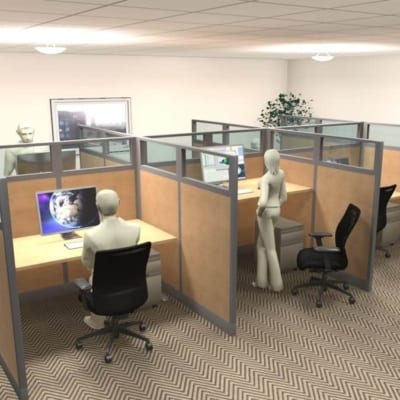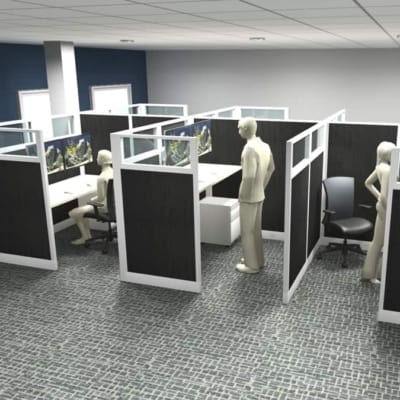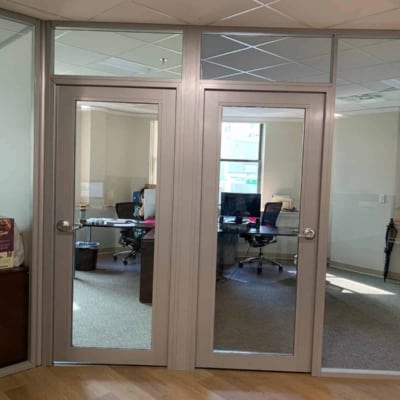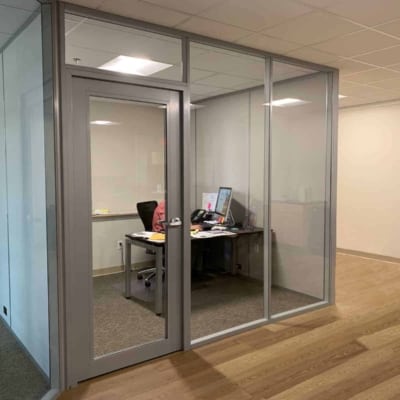Cubicle Walls
Office Cubicle Walls & Privacy Panels
Add privacy and minimize noise and distractions with cubicle panels and modular walls in your office.
Cubicle walls are a common fixture in modern office environments. They are used to divide large open spaces into smaller, more private work areas. They offer employees a designated workspace that is conducive to concentration and productivity and can also prevent the spread of germs or airborne illnesses. Cubicles and privacy panels dropped in popularity a few decades ago as open-office designs became the prevailing trend. Today, cubicles are rising in popularity again for a few reasons.
- Workers have felt exposed and distracted in the open-office floor plan and prefer more privacy.
- Offices are undergoing design changes due to the pandemic, as people are generally more conscious of airborne illnesses. Workers prefer more distance and separation from coworkers to avoid transmission of COVID-19, the flu, and other viruses.
As businesses adapt to the changing needs of the modern office and workforce, the demand for privacy panels and walls for workstations is growing. Walls and dividers provide flexibility for offices looking to shift back from the open office toward office layouts that offer more separation to increase privacy and minimize distractions. Many offices are also looking for solutions to the new hybrid remote work model; some offices are looking to reimagine how office space is used while others are looking to downsize the office footprint. These changes require flexibility, which is something that modular office furniture, including modular walls, can provide.
Let’s explore the different types of cubicle and modular walls, their benefits and drawbacks, and the key factors to consider in selecting and installing cubicle walls in an office
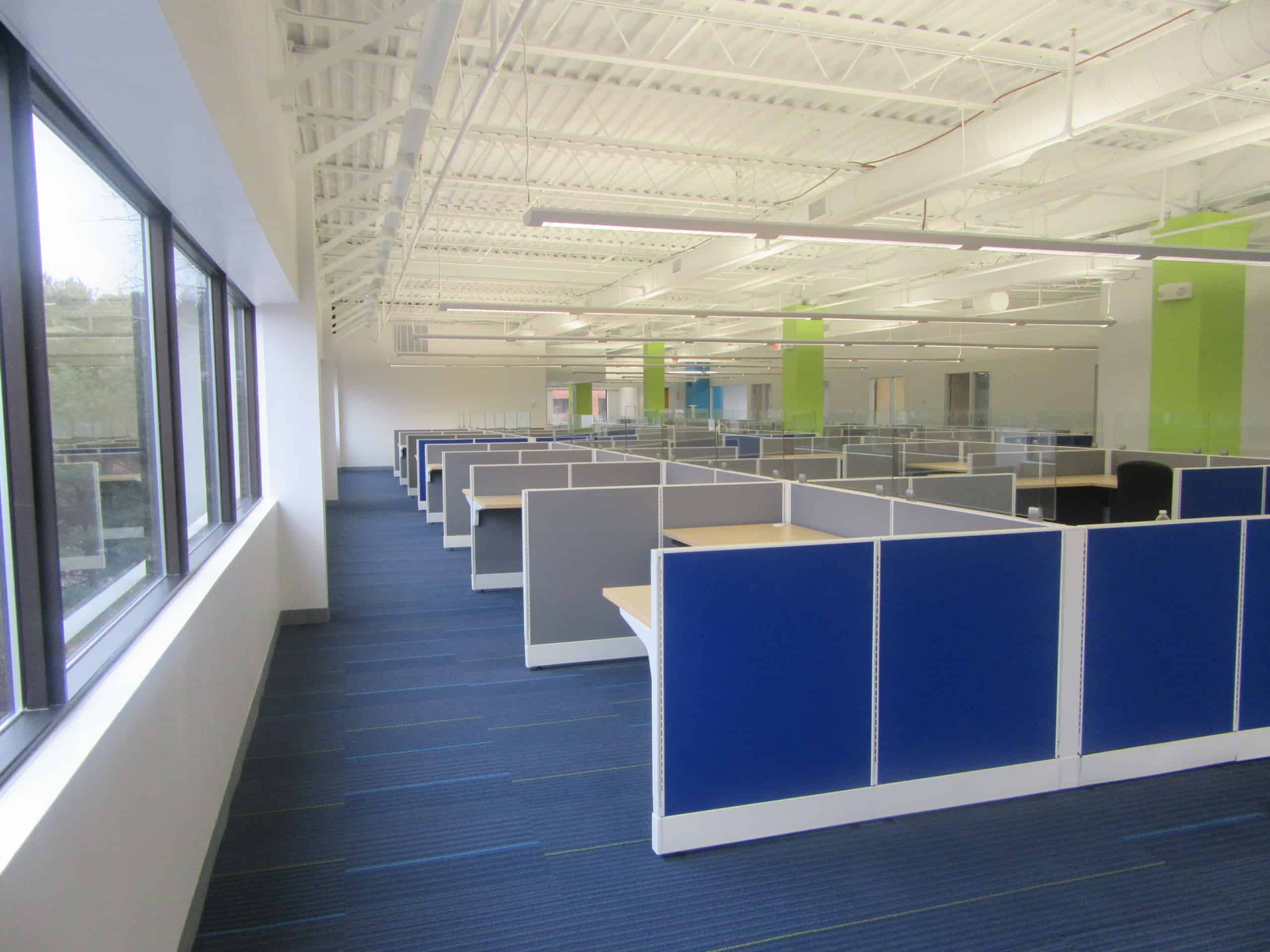
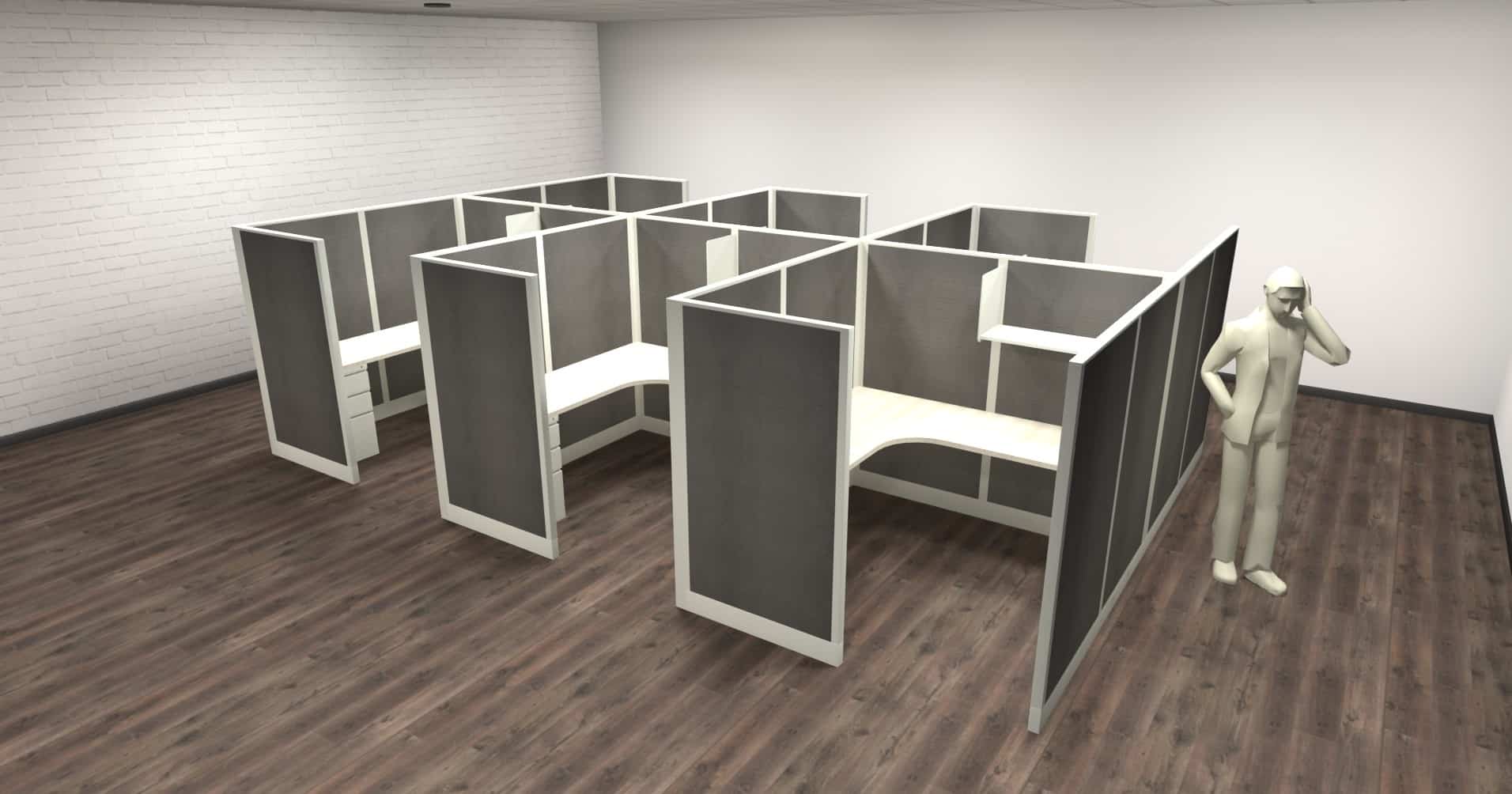
Types of Cubicle Walls or Panel Systems
Cubicle walls, also known as panel systems, come in a variety of styles, materials, and configurations. Here are some of the most common types:

Freestanding: Freestanding cubicle walls are not attached to any building walls, as opposed to panel-mounted cubicles that are connected to one or more walls. Freestanding systems use separate panels, placing them around individual workstation components such as desks, chairs, and filing cabinets.
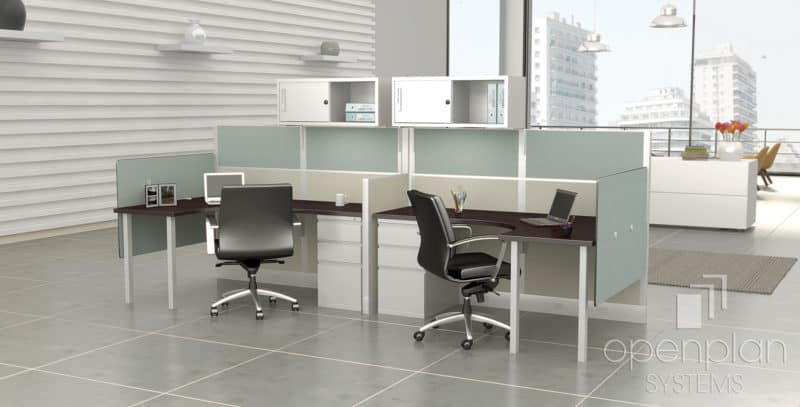

Modular Walls: Modular walls allow businesses to add floor-plan customization, particularly useful in open office layouts. These products add privacy and minimize noise and distraction. When needs change, modular walls can be used to create a new conference room or private office in what had been extra open space.
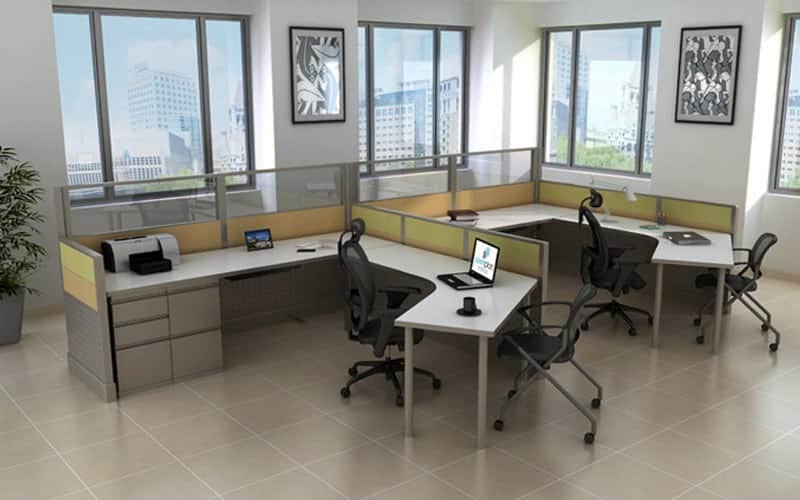
Low Cubicle Walls: Low-wall panels typically offer the person sitting at the workstation privacy from the shoulder down. However, the person’s head and computer are visible and he or she can look around the office when seated.

High Cubicle Walls: High-wall panels typically provide close to full privacy. Seated, the person is out of sight and cannot see around the office.
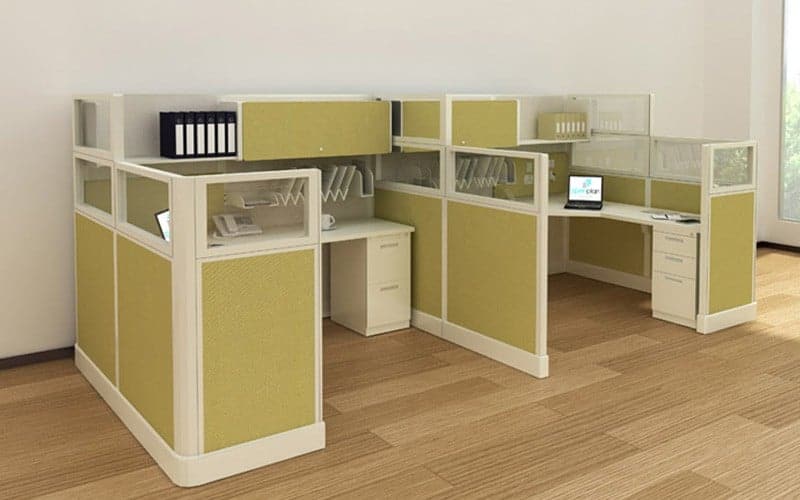
Fabric Walls: Fabric walls are a popular choice for cubicle dividers. They are made from a thick, sound-absorbing material that provides both privacy and noise reduction. Fabric walls can be customized with different colors and patterns to match the aesthetic of the office or the brand.
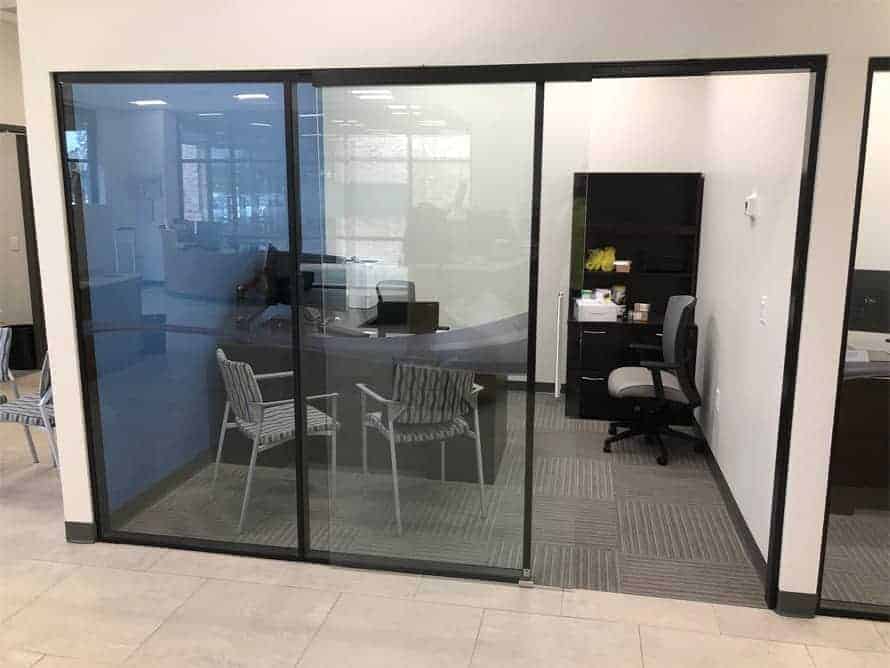
Glass Walls: Glass walls are a sleek and modern option. They provide natural light and visibility while still creating separate workspace. Glass walls are a popular choice for executives and managers who need privacy but want to maintain a sense of openness.
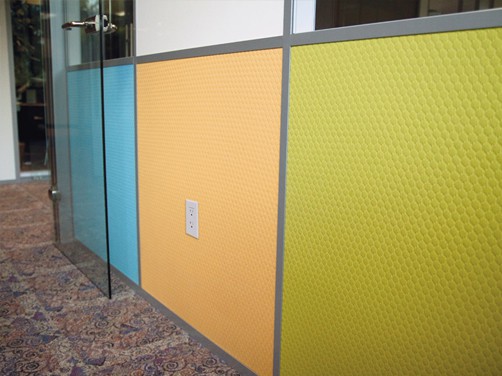
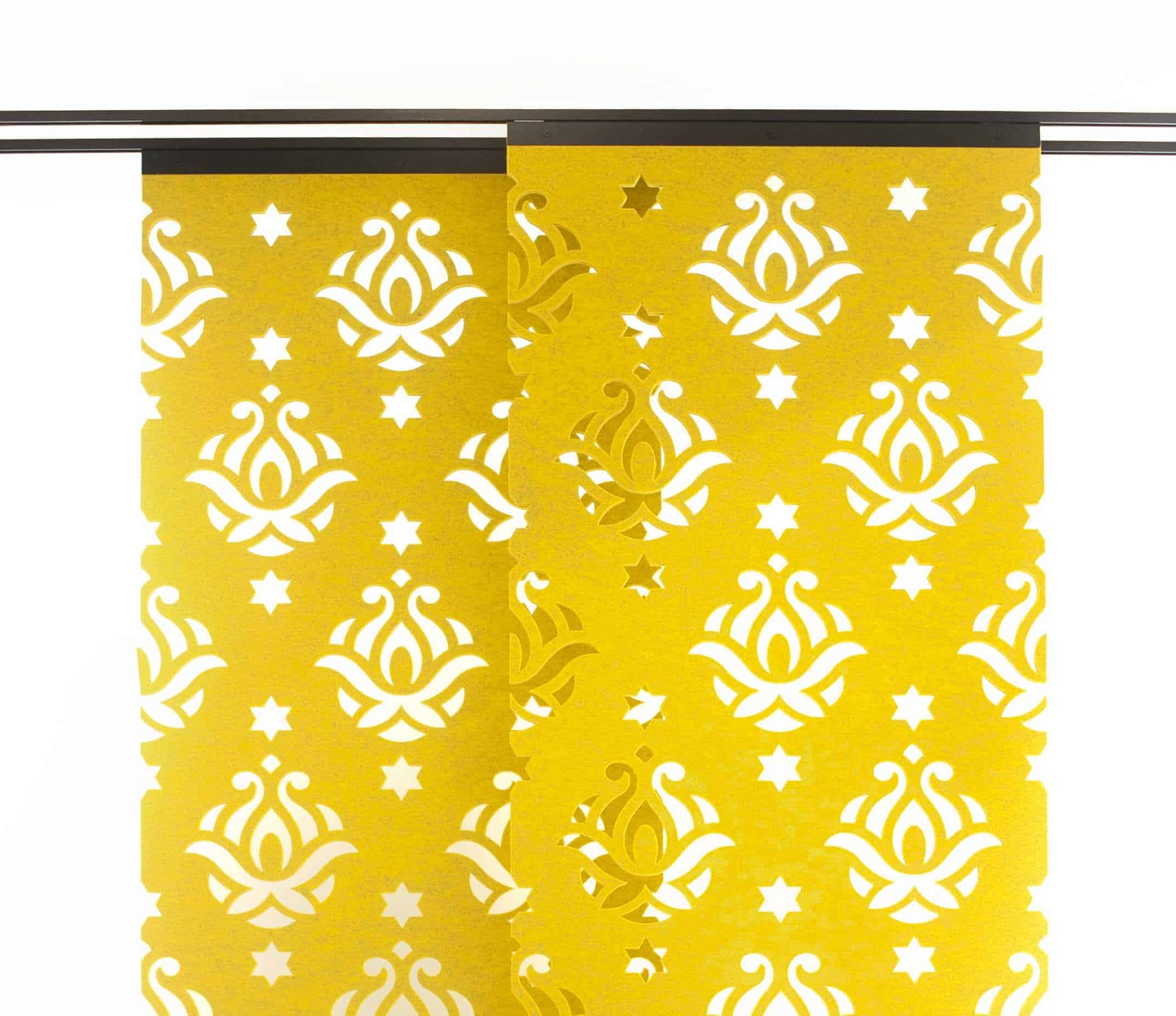
Benefits and Drawbacks of Cubicle Walls
Cubicle walls offer several benefits for both employers and employees. They can:
Increase privacy: Cubicle walls create a sense of personal space for employees, reducing distractions and increasing productivity.
Provide noise-reduction: Cubicle walls can absorb sound, reducing noise levels in the office and improving concentration.
Improve organization: By creating designated work areas, cubicle walls can help keep the office organized and tidy.
Promote customization: Cubicle walls can be customized with different materials, colors, and configurations to match the aesthetic and functional needs of the office.
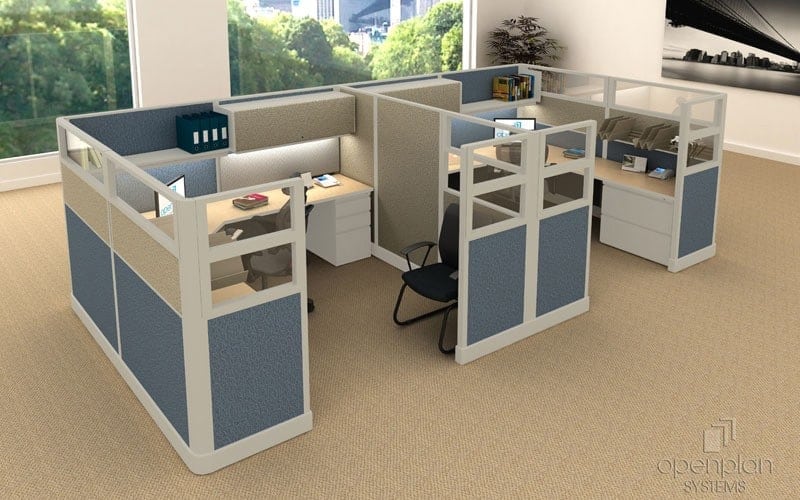
However, there are also several potential drawbacks to cubicle walls, including:
Reduced collaboration: Cubicle walls can create physical barriers between employees, reducing opportunities for collaboration and teamwork.
Decreased natural light: Solid cubicle walls can block natural light, which can negatively impact mood and productivity.
Higher costs: Installing cubicle walls can be expensive, especially if customization is required.
Difficulty in communication: Cubicle walls can create a physical barrier between employees and hinder communication between coworkers.
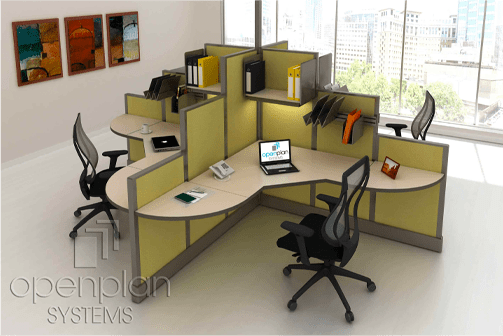
Factors to Consider in Choosing Cubicle Walls
When you are selecting cubicle walls for your office, there are several key factors to consider:
Cost: Cubicle walls can be a significant investment. It is important to consider the total cost and whether that cost fits within your budget.
Privacy needs: Consider the privacy needs of your employees and the type of work that they do. If they require high levels of privacy and concentration, solid walls may be a better choice than glass or fabric.
Aesthetic considerations: Cubicle walls can be customized with different colors, patterns, and materials. Consider the overall aesthetic of your office and select a style that matches.
Noise reduction: Consider the level of noise in your office and whether acoustic walls are necessary to reduce noise levels.
Natural light: Think about the importance of natural light in your office and how solid cubicle walls might impact its availability.
Collaboration needs: Consider how cubicle walls might impact collaboration and teamwork in your office. If collaboration is a priority, consider alternative workspace configurations that promote collaboration.
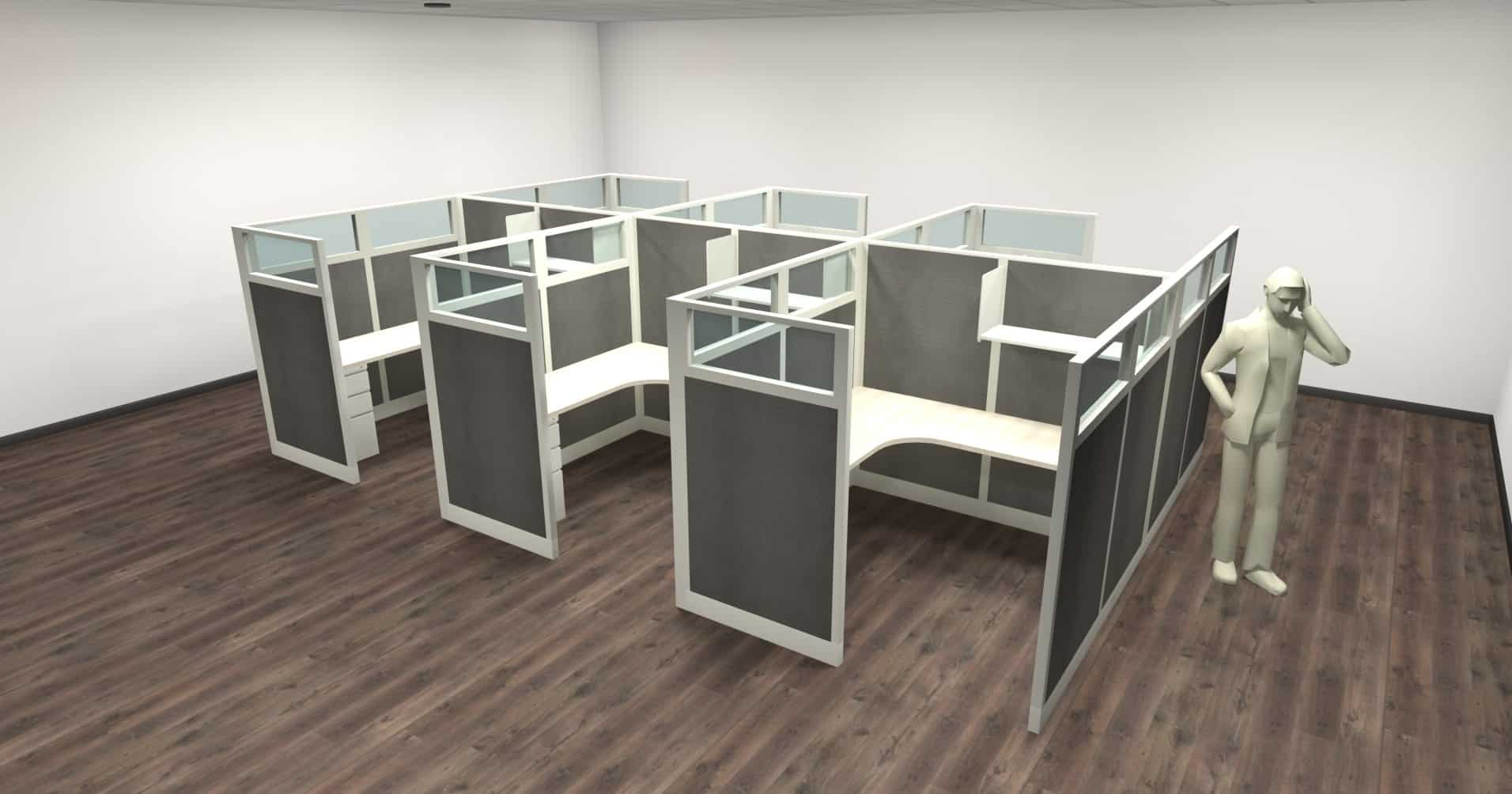

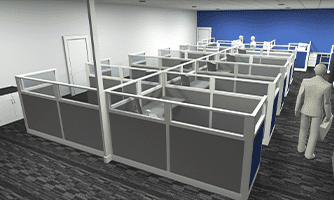
Frequently Asked Questions
What is an open plan office layout?
An office without partitions and cubicle walls.
What is a Privacy Screen?
Privacy screens (also known as privacy panels) are used as dividers between workstations to define boundaries and give employees both privacy and improved acoustics. They can come in fabric, lexan glass, laminate, and whiteboard finishes, and are available in many sizes to fit almost any workstation.
What is modular office furniture?
Modular office furniture is furniture that can be easily moved and reconfigured.
How should you approach office design for the hybrid workforce?
It is dependent on the philosophy of the company and is taken on a case by case basis. Some companies may want employees to return and have their own desk while others may leave more collaboration space for employees who do not come to the office as often.
Should our office design and furniture be an open layout?
Finance, HR, engineering, and accounting, are typically behind closed doors or at private work spaces
What is standard cubicle size?
How can I improve my office space/layout?
Before you can improve your office, you must first figure out what is not currently working in your office.

